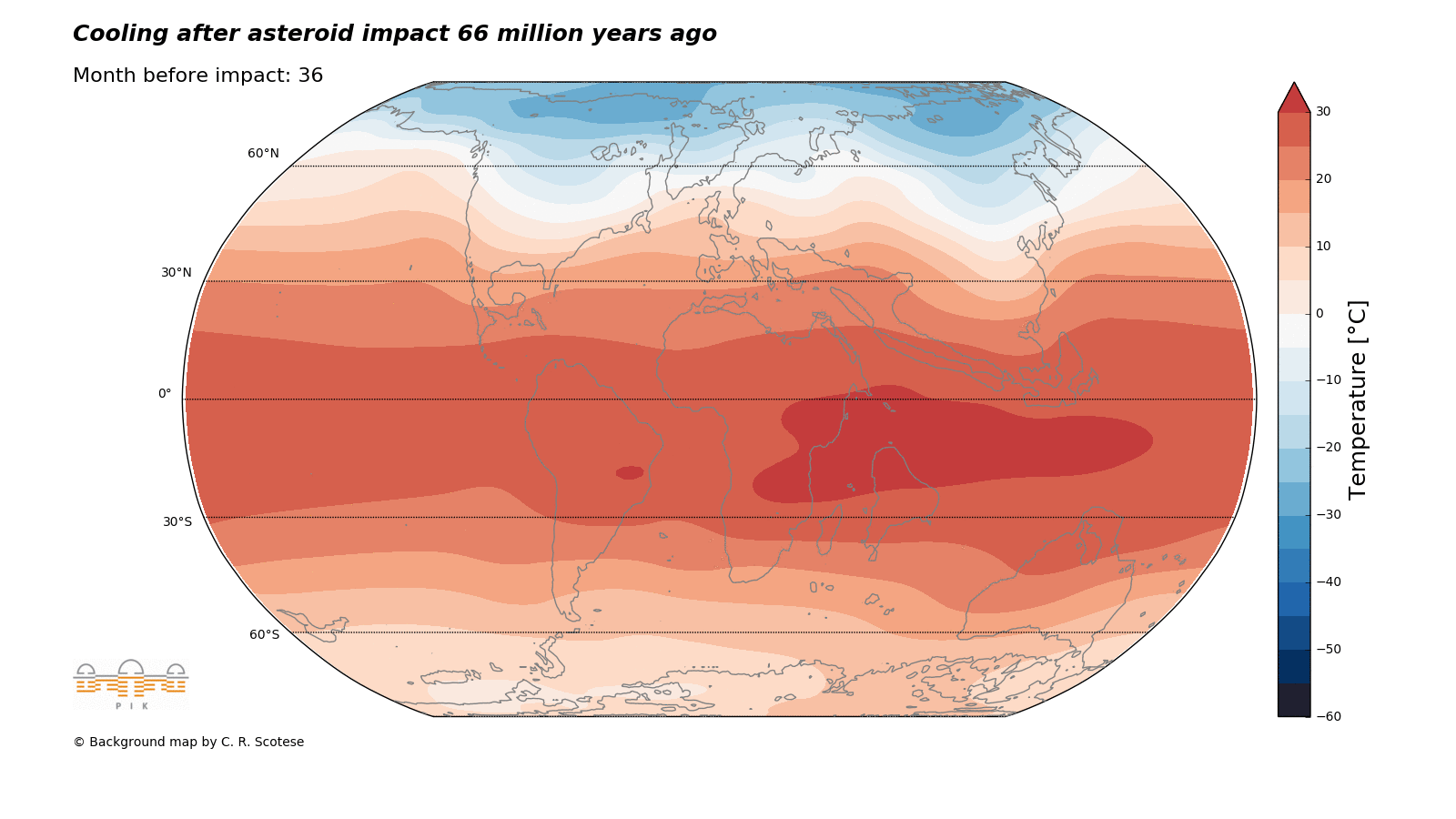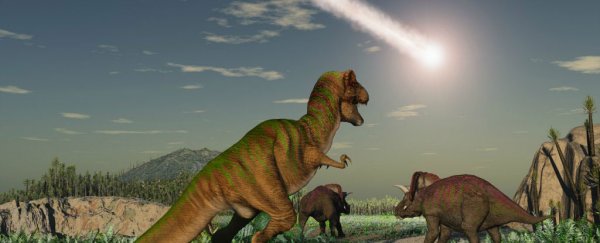Freezing temperatures and a blanket of darkness spelled the end for the non-avian dinosaurs roughly 66 million years ago, according to a new study that suggests this massive extinction period was far more complicated than we thought.
While scientists have long hypothesised that a dust cloud ejected by an asteroid impact was what killed off these ancient creatures, new simulations show that there could have been more factors at play than just dust clouds and volcanos.
Researchers at the Potsdam Institute for Climate Impact Research (PIK) in Germany now think that droplets of sulphuric acid, formed in the upper atmosphere by the asteroid's impact, led to a long-term period of global cooling that many species of dinosaur could not handle.
"The long-term cooling caused by the sulphate aerosols was much more important for the mass extinction than the dust that stays in the atmosphere for only a relatively short time," says one of the researchers, Julia Brugger.
"It was also more important than local events like the extreme heat close to the impact, wildfires, or tsunamis."
To figure this out, the researchers used a specific type of computer simulation called a coupled climate model, which combines climatic calculations for both land masses and oceans. It's basically one of the most advanced climate models we have.
Like the asteroid hypothesis that has been widely accepted since 1980, the starting point for this new research is the massive asteroid impact that formed the Chicxulub crater in Mexico.
This time though, the scientists looked beyond the increased volcanic activity and short-term dust cloud that were kicked off by the impact, and took a longer-term view – and that's where the sulphuric acid comes in.
According to the new hypothesis, these sulphur-bearing gases would have vapourised from the asteroid crash site and become the main factor in sunlight being blocked and Earth cooling down, rather than dust from the impact or volcanic ash.
The idea of sulphate-rich rocks around Chicxulub being liquidated and forming acid in the atmosphere has been suggested before, but the new simulations give us a better idea of how it all might have played out.
Brugger and her colleagues say that air temperatures could have dropped by at least 26 degrees Celsius, with 3 to 16 years of sub-freezing temperatures, and a global recovery time of more than 30 years.
"It became cold. I mean, really cold," says Brugger.
 Temperature changes before and after the asteroid impact. Credit: PIK
Temperature changes before and after the asteroid impact. Credit: PIK
The researchers also suspect that as the surface water of the oceans cooled, and became replaced by warmer water from deeper down, nutrients would have reached the surface and prompted massive blooms of algae – blooms that could also have been toxic.
Some 66 million years later, the researchers say there are still lessons to learn from this ancient example of sudden climate change.
"It is fascinating to see how evolution is partly driven by an accident like an asteroid's impact – mass extinctions show that life on Earth is vulnerable. "It also illustrates how important the climate is for all lifeforms on our planet," says one of the team, Georg Feulner.
"Ironically today, the most immediate threat is not from natural cooling but from human-made global warming."
The research is published in Geophysical Research Letters.
